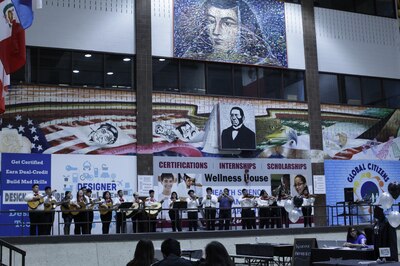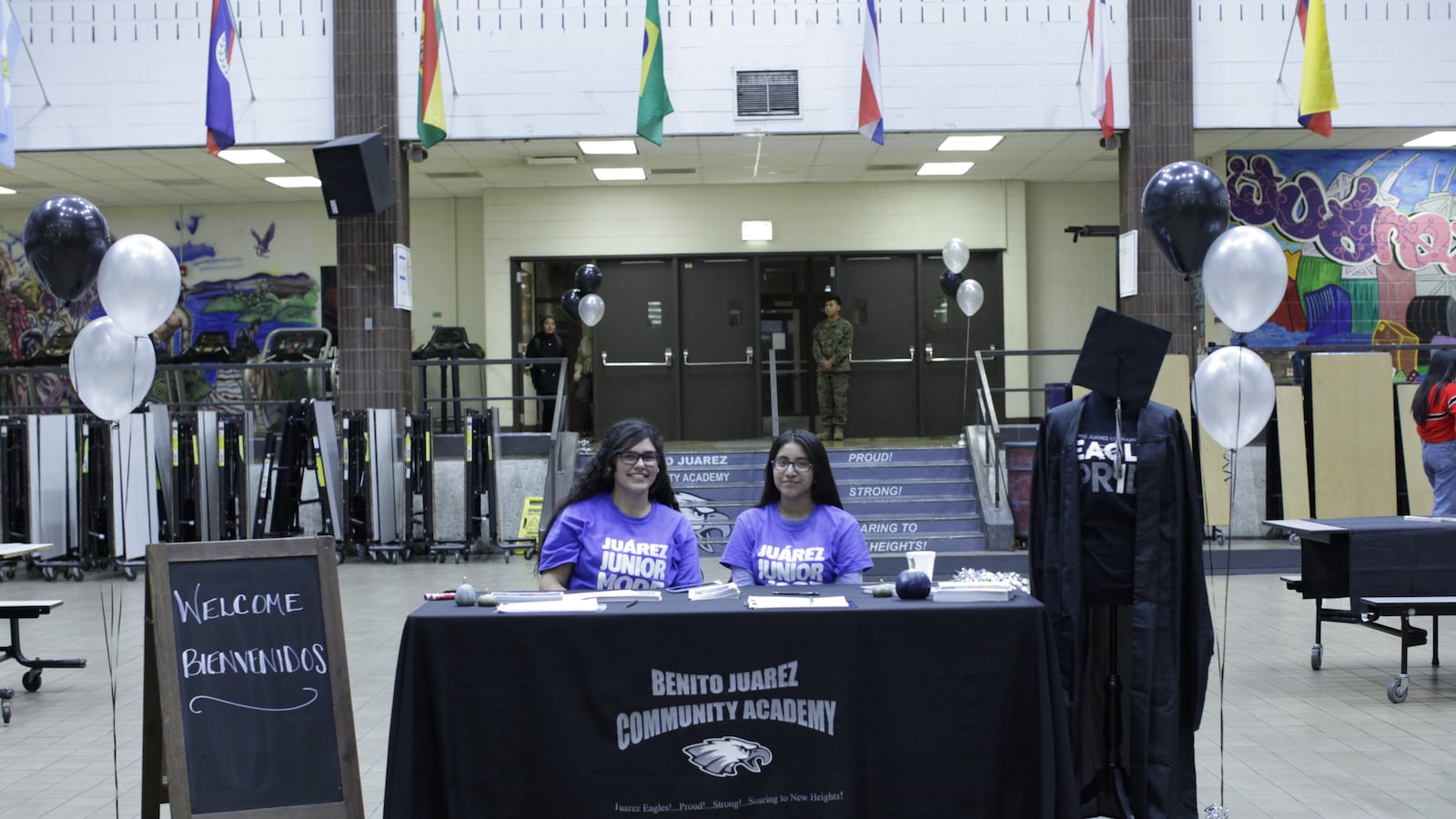When Jared Gonzalez toured Little Village Lawndale High School with his parents earlier this fall, it marked high school visit No. 6.
Gonzalez left impressed by the academic focus and values espoused at two of the campus’s four autonomous schools, Greater Lawndale High School for Social Justice and the Multicultural Academy of Scholarship High School.
His mother favors the smaller class sizes at the West Side schools, which she said could ensure her son gets more attention from teachers, and the fact that it’s a 10-minute drive from their home in Little Village. Proximity and programs are the two guiding principles behind the Gonzalez family’s high school search, his mother Lucy Gonzalez said.
“We still have other schools to check out, and it’s going to be the same all the way until December,” she said.
Chicago Public Schools heads down the home stretch of recruitment season, when high schools make final pushes to attract next year’s freshman class amid a game-changing, online application process that debuted last fall. Schools dearly want to land among student’s top three choices, one of which typically ends up being their destination.
In the heightening competition for students, Chicago’s more than 160 high schools behave like small colleges desperately vying to impress would-be freshmen and their families.
On campus tours, student guides chat up their school’s facilities, curriculum and campus culture. Principals tout their vision for the school and track record of success. Families walk away with brochures and totes full of swag like water bottles, lanyards, refrigerator magnets and T-shirts. There are 53 high school open houses scheduled between now and Dec. 14, when GoCPS applications are due.
While choosing a high school is serious business for students, their collective choices can become a do-or-die point for schools competing for a shrinking pool of students. The dozens of Chicago high schools labeled as underenrolled risk falling into an unforgiving downward cycle. Schools losing enrollment also lose district revenue, which is doled out per student, then find it even more difficult to offer popular programs to appeal to applicants.
Multicultural Academy for the first time created a marketing committee, according Principal Maria Amador, who was greeting families at the door during the open house. The volunteer committee is working to redesign the school’s logo, create flashier brochures, upgrade the school’s website, and boost its social media presence.
Unlike some schools, especially on the North Side, Multicultural High School doesn’t have a campus “friends” group to raise money and spread the word about school accomplishments, but Amador said that’s in the works.
Because families now can research and apply to every high school and high school program option in the city via the universal, online GoCPS platform, principals realize they need to up their marketing game.
“The different specialization of each school is really starting to become what’s driving decision-making, which is, I think, a very healthy thing,” said Dan Kramer, principal of Roosevelt High School on the Northwest Side.
As Back of the Yards College Prep High School Principal Patricia Brekke said, “it’s game on now.” Just attending high school fairs no longer is enough.
“We always had in-house made brochures and we had our students helping us promote our school to talk to other students — and it’s not enough,” she said, noting other schools’ professional-looking flyers. “It’s like it’s from a college. It’s not just about something that lists your programs and gives a good description.”
Applicants can choose up to 20 schools on the GoCPS application.
The stakes are particularly high for neighborhood high schools that must compete with high-demand selective enrollment programs, charter schools, magnet schools, and other campuses that draw students from across the city rather than from neighborhood attendance zones.
The competition puts some neighborhood schools at a disadvantage — those without parent booster groups, or influential alumni, or established marketing budgets. At a conference last week at Chicago Vocational Academy High School in Greater Grand Crossing, educators and parents pushed for the school district to help neglected high schools to counter outdated images and raise their profile.

Even at overenrolled schools like Benito Juarez Community Academy, in Pilsen, the recruitment push is on. The school designed for 1,572 students now holds 1,708 from across the city. Leaders still experimented with how to communicate the school’s values to families.
The school has gone through several iterations of open houses — having parents sit in auditoriums and watch presentations, or allow parents to walk around the school at their leisure — but in the end found it was most effective to offer student-guided tours that gave families a sense of the school’s culture, like those you can spot on college campuses around the city.
At a recent open house, Principal Juan Carlos Ocón walked around the auditorium, shaking hands with parents and prospective students as the school’s mariachi band played on stage. Talking to the families, Ocón touted how the school supports students. He ticked off the range of academic offerings, including medicine, architecture and the International Baccalaureate, as well as evaluations that consider students’ developmental milestones as well as grades. And students can earn credits playing in the mariachi band or learning folkloric dance.
Back at Little Village Lawndale, Jared and Lucy Gonzalez remained undecided. After all, they’re also applying to at least three top-rated selective-enrollment options and plan to take full advantage of space on the universal high school application for up to 20 schools, Lucy Gonzalez said.
“We’re trying to do the best for our son.”


